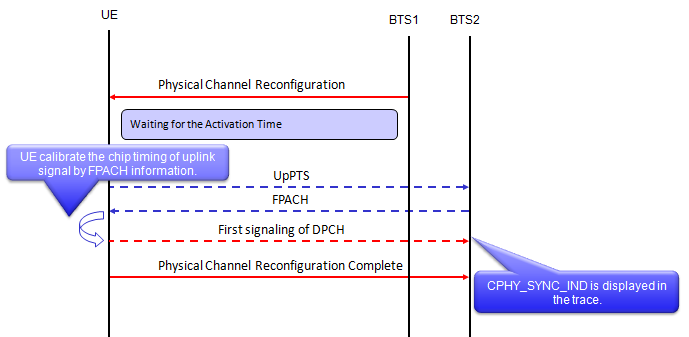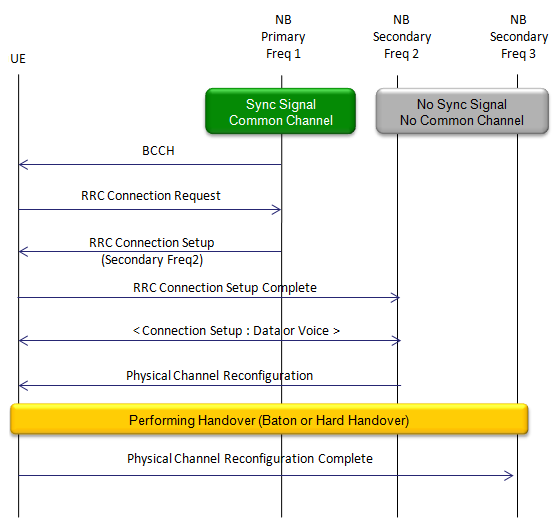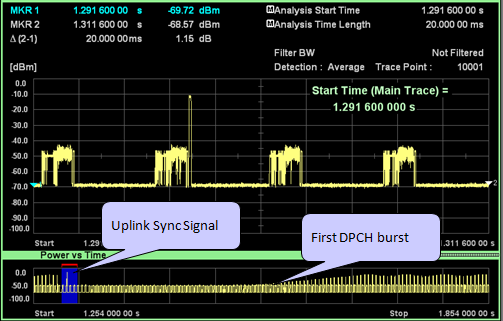|
3G/UMTS-TDSCDMA |
||
|
Handover
Overall sequence for TDSCDMA Handover is as illustrated below. (The illustration below is for Hard handover which requires Synchorinization process during the handover).
Baton vs Hard Handover
There are two different types of Handover in TDSCDMA, one is Hard Handover and the other is Baton handover. As you see in the following protocol log, in Hard Hard handover UE and network goes through physical layer synchronization process through a kind of PRACH process. (This seems to be similar concept of LTE Handover)
In RRC messages, the difference is whether or not using the following parameter.
DL-DCCH-Message.message.physicalChannelReconfiguration.later-than-r3.criticalExtensions .r4.physicalChannelReconfiguration-r4.ul-ChannelRequirement.ul-DPCH-Info.modeSpecificInfo .tdd.ul-TimingAdvance
Hard Handover performHandover with TimingAdvance enabled and Baton Handover perform Handover with TimingAdvance disabled. So Hard handover would be more stable than Baton Handover
To synchronize UE and BTS in TD-SCDMA Hard Handover, the following procedure is used.
1. Send UpPCH signal from UE (Equivalent to Preamble in W-CDMA) 2. Send FPACH signal from BTS (Equivalent to AICH in W-CDMA) 3. Send PRACH signal from UE (Equivalent to PRACH in W-CDMA)
Unlike W-CDMA, TD-SCDMA works in TDD mode, it means the sending/receiving timing is very important. The FPACH signal sent by BTS includes the information which indicates how far behind/ahead the UpPCH signal sent by ouUE is, compared to the BTS reference timing. i.e, FPACH carries the information on time difference between UpPCH and BTS Reference timing. Based on this information, UE determines the exact slot timing where PRACH should be transmitted.
This additional synchronization step may reduce the possibility of radio link failure during the handover and in turn reduce the chance of call drops. So Hard handover would be more commonly used than Baton Handover.
N Frequency Handover
Power Profiles during Handover - Example
Followings are acouple of screenshots showing the uplink power (UE TX power) during the handover. It would be hard to correlate this power data exactly to each steps of handover procedure.. but I hope this would give you some big picture.
|
||




